Media | Articles
For These Corvettes, the Stock vs. Modified Debate Has a Clear Winner
At Barrett-Jackson’s marquee Scottsdale auction last month, two trends stood out. They both have to do with custom cars. First, the sheer quantity of customized vehicles was overwhelming. Second, the customs consistently brought more—sometimes much more—than their stock year/make/model counterparts, even ones restored to factory specifications. Tradition dictates that modifying your car doesn’t add value to it and indeed often detracts from its value. The results at Barrett-Jackson, particularly for several vintage Corvettes, seem to fly in the face of that tradition.
First, some background. The term “custom car” has evolved over the past twenty years. In the past, it referred to re-imaginings in the tradition of Ed “Big Daddy” Roth. They were extravagant, fanciful, and creative. They displayed little of the original car they claimed as a starting point and nodded more to cartoons than to anything seen on the roads of the real world. Over the past couple of decades, those customs have merged with a new and increasingly popular category called “restomod.”

Coined by the team at Barrett-Jackson—Craig Jackson, Steve Davis, and Gary Bennett—in the mid-2000s, restomod refers to cars that are mostly stock-appearing on top (aside from a lower stance and large modern wheels) but have completely new underpinnings. Twenty-first-century drivetrains, upgraded suspension and brakes, and comfort features like modern air conditioning are the main ingredients. The end product is supposed to feature the performance, safety, and reliability of a new car while retaining the style and presence of a classic. These make up the majority of “customs” today, which have little connection with the creations of “Big Daddy” Roth.
Where buyers buy, builders build. For buyers and builders of restomods, Barrett-Jackson Scottsdale has increasingly been the go-to auction event. This has set up a contrast between the “customs” and their restored, stock-configured counterparts. The customs are winning the battle of the bids, and they were ubiquitous at WestWorld.
Custom Corvettes were particularly abundant, and two pairs exemplify the contrast between factory-correct and thoroughly customized. The customs are fresh, professionally built, and gorgeous, but the restored cars aren’t slackers, either, and both the stock Corvettes sold at prices appropriate to their condition, options, and documentation. In each case, though, the customs won out by a large margin.
Marketplace
Buy and sell classics with confidence

First, the pair of 1958 Corvettes—Lots 1108.1 (stock) and 1338.1 (custom). Lot 1108.1 was a factory-correct black-over-blue car with a 283 cubic-inch, 270-hp dual-quad engine, four-speed manual, hardtop and soft top, heater, and radio. An older restoration, it showed some age and miles but was still close to showroom condition. It sold for $220,000.

Lot 1338.1, meanwhile, was painted in Cashmere over Linen leather and although it had a 1958 Corvette VIN, the chassis underneath was a modern frame by noted builder Art Morrison. It also featured a 6.2-liter LT1 engine from a 2023 Corvette as well as an automatic transmission, adjustable coilovers, 19-inch alloy wheels, Wilwood disc brakes, and air conditioning. Aside from some fit issues with the windshield and door posts, it was a gorgeous, comfortable, and surely exhilarating ride. It sold for $440,000—double the final price of the factory-correct ’58.

Then there were the 1963 coupes, lots 1363 (stock) and 1363.1 (custom). Lot 1363 was a Sebring Silver over black vinyl split-window coupe restored to like new. Not only that, it was a rare Z06 Competition model, which in 1963 got you a 327 cubic inch, 360-hp fuel-injected engine, Positraction rear end, heavy-duty shocks, larger front anti-roll bar, and upgraded brakes. It was Bloomington Gold certified and has been awarded NCRS Top Flight. A genuine Z06 is among the most valuable early Corvettes, and this one sold for $330,000.

Lot 1363.1, the very next car across the block in WestWorld, was another split-window coupe finished in black over red leather. Its modern drivetrain was made up of a Wegner LS9 block, an LT4 crankshaft, a Magnuson supercharger, and a Tremec T56 6-speed manual. It rode on a low chassis frame, also from Art Morrison, as well as coilovers and a multi-link suspension. Other upgrades included Wilwood brakes, Schott alloy wheels, Vintage air conditioning, and Recaro seats. It sold for $412,500.
The contrast goes beyond price because these are of course very different vehicles despite sharing the same year/make/model. The restomods are fresh and beautiful but also up-to-date in their performance and luxury equipment. They are each unique statements of style and exclusivity. Their appeal is immediately apparent, though they may only be driven a few miles to a show or in a parade, then exquisitely detailed to remove all traces of dust, dirt, or—God forbid—mud. But as they age, even with limited and careful use, their “edge” will soften. Patina is not the friend of the restomod. A digital touchscreen from 2024 in a 1964 Corvette may look awkward and out of place in 2044.
Factory-correct restored cars age and lose their edge, too, but to a far lesser extent. Should the restored cars get used to the point where they show patina, the act of re-restoring them can also help boost their value once more. Owning one of these Corvette customs is surely a satisfying experience, not only for the feeling behind the wheel but also for possessing a singular, intricately assembled, and detailed creation with a special combination of style, power, technical sophistication, and performance. Owning one of the carefully restored original configuration Corvettes is less distinctive, but also less subjective and more historically relevant as an authentic, unmolested piece of the era that produced them.
Different versions of the same car for different buyers, then. But the collector car market, which has long favored authentic factory-correct above all else, is now embracing custom creations with open arms.
***
Check out the Hagerty Media homepage so you don’t miss a single story, or better yet, bookmark it. To get our best stories delivered right to your inbox, subscribe to our newsletters.

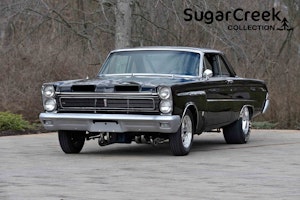
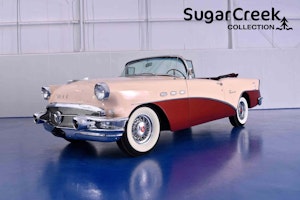

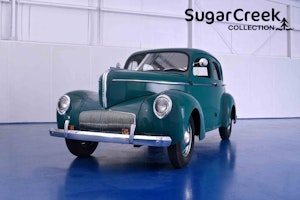

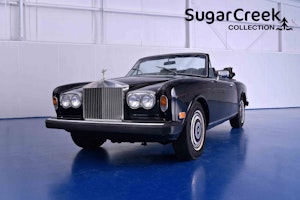

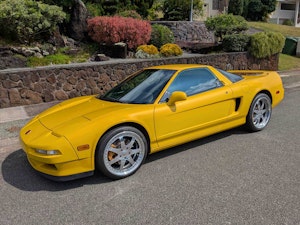








As the prices go up on these restomods, relinquishing them to being garage queens, their reason for being starts to get lost on me. After all, isn’t their point the increased drivability vs. the original?
Over all I’m not a fan of the restomod idea. I would prefer that valuable classics retain much more originality. Simple modifications to an original car like modern radial tires and bolt-on brake upgrades significantly improve drivability. These builders are taking it to an extreme level and I fully agree with NAMiata’s assessment. Yet with countless hours and dollars spent on detail I see that both of the C1 Corvettes pictured have the coves behind the front bumpers painted body color when they should be satin black. Do these builders have no one employed to stand back and say “does that look right to you?” It becomes apparent that they really don’t know much about Corvettes.
I’m a fan of restomods but like you its going too far. As someone who remembers how 70’s cars drove, I think improvements in rideability is something that makes the vehicles more attractive and desirable. But yes, changing the complete layout of the car so that it only resembles a classic is a situation gone too far.
Are these restomods really custom? really unique? When you can simply order up a Art Morrison chassis, Wilwood brakes, Vintage Air , Recaros and..and so can anyone else, you’re going to start seeing a lot of really much the sames. It’s getting out the plastic and ordering out of the catalogue. The finding innovative solutions and creating something unique, one of a kind, is lost when it’s just a matter of getting the right bolt on’s and having someone bolt them on regardless of price. So they’re not ‘a dime a dozen ‘ they’re 400k plus a dozen instead , which means at Barrett- Jackson they’ll be roughly a dozen of them at any event .Before long examples of “these older builds that were popular back in..”
I agree, to an extent, but the availability of pre-engineered parts really makes these cars affordable to more people. I like that aspect. I can’t imagine being happy actually driving a 1969 Mach 1 (my boyhood dream car) with its horrible numb power steering and scary brakes, but it would be a different proposition entirely with a modern rack and pinion system and real suspension, powered by a Coyote engine. Then it becomes a possibility, distant still perhaps, rather than simply a dream.
Look you have to understand the realizes here. These restomods are not generally cars built in some guys car port or garage. There is a lot of time and money goes into these. Often these cars start out as shells with rusted frames. Fully restored they may not be worth much do to year or lack of original parts. Many are parts cars save from being scrapped.
The original cars are often well documented and well restored original cars. They were often not in too bad of shape to start. They often are years and option cars that are worth the restoration.
The other thing too is the big money at BJ often inflates these cars prices and just selling them will not always realize the same prices.
The other factor of a mod car is was it done in a way that the customization holds up with time. Many cars from the Pro Street 80’s look like clown cars while some held up much better.
The safe investment is stock. It is less subjective and will appeal to more buyers over time.
There is no right or wrong just choices and what you are willing to accept.
I just purchased in early August a “garage find” in my neighborhood in Colorado, a 1971 Ford Bronco totally stock and most of all a survivor with original paint and parts! No rust? It sat for 17 years in the garage and never moved, no rodents was my biggest concern. The stock 302 V8, 3 speed manual transmission and manual steering paired with the likes of “Fred Flintstone” braking system which actually worked perfect with no issues. The Bronco actually ran perfect after I cleaned the fuel tank of the gunk/varnish, preformed a total old school tune up including an oil change, new battery, cleaned and rebuilt the carburetor, oh, air in the tires which were from the 1900’s. It fired up on the first crank? Pure luck because I’m a better chef than a mechanic! It was pure luck being in the right place at the time! I bought the Bronco from a 91 year old man. He couldn’t care for it or drive it for that matter. He sold it to me because I was going to teach my 15 year old daughter how to drive it and smoke a couple of clutch assembly’s! Most of all keep it as original as possible.
I just returned from Barret Jackson’s event in Scottsdale and was blown away by many different kinds of vehicles that were original and rest-mods. I was there to find out the actual or reasonable price of my vintage Bronco or close. There was only one? It went across the auction block and sold for exactly what it was worth. Now I have a better idea of what I have and the actual value. I wasn’t a car guy, but, I am now. The original Bronco parts are easy to get locally or online and not expensive?
My point is, as being a beginner at this game and realizing what I have is highly valuable to me in its current state. I’m never going to do a frame off rotisserie resto-mod? The Bronco is a time capsule and most of all it’s really cool to the masses of people turning their heads when I’m driving it around town. Also, I’m a total Chevy truck guy at heart.
Yes one like this is for preserving as most are used up. The value if these are high now so this is one I would not invest in and keep it or sell it.
Now if it had the rust snd other issues an aftermarket Jody snd some mists save if from a parts car to one that will turn a good profit.
As a beginner classic car owner (who is really a Chef), and even if you are a Chevy-guy, I think I speak for all of us on here: You are one lucky guy to have found a solid, original, stock ’71 Bronco from a 91-year old guy who would sell it to you for a reasonable price. The value of those things have unexplainably & unreasonably skyrocketed since Ford hinted they were bringing the name back, and prices have never come back to earth. The only other vehicles I can think of that had similarly been worth almost nothing, to being worth their weight in gold, is maybe the Toyota 2000GT, a ’68-72 C10 shorted, fleet side pickup. Some others that appreciated like the early Broncos, maybe early Porsche 911s, Ferrari Dinos, Datsun 240Zs, any 426 Hemi car during the 70’s gas crisis ….. Can anyone think of anything else?
Being somewhat of a purist, I was never much of a fan of restomods although they’re beginning to grow on me. Wilwood brakes, Sniper FI, coil-overs and modern steering boxes all sound very appealing for the driveabilty of my 72 Corvette. But keep in mind that no matter what changes are made you still have to deal with 1958 ergonomics. No way to change that.
With money you can change anything.
Here is the deal. You don’t destroy a well preserved car.
But if you have a Corvette that is more parts car than original put it back on the road. It would be difficultbyo get it back yo numbers matching so get creative.
But if it was a Bloomington Gold car no you do not mod it.
What is do bad about a 58? In many respects it is better than an 84. If you mean leg room I have seen them lengthened.
Have you seen the Kindig it ’53 Vette? Looks like an original body, but ‘reimagined in dimension to fit modern anatomy. I’ve seen stretched Broncos and Jeeps, and numerous 4 seaters turned into 2+2s for comfort
Not surprising. For one thing, B-J is not the collector car market. More like a Frat party where cars change hands on TV. Sort of a “who’s the biggest dog in the room?” (or on the phone)
However, I get it. I’ve restored cars to show. I still do. I think it’s more something you do for yourself, since starting with anything but the best, most desirable cars is guaranteed to lose you money. Even if you get past the low mileage/fresh restoration thing, most of these cars drive like crap compared to anything new. And the work- and expense- never end. Plus, a show car has a limited shelf life. Once it’s hit the shows, collected awards, and received the coveted invitations, what do you do with it? Either add it to your collection, or sell it. Most likely, losing money in the process.
On the other hand, restomods are great for the instant gratification crowd. You jump the line to get a Ring Brothers, Kindig it or other top notch builder car. A car, that no doubt would have been much more expensive built to customer spec. Now, the new prestige is not history, it’s being a ‘SEMA’ car, or winning Oakland or Detroit. Atleast with the GoodGuys circus, and other automotive Olympic events, we’re getting cars off trailers. The dreams are now driveable. Will restomodding kill the collector car market? Some of it. I think the days of guys hoarding date coded carburetors and distributers is pretty much dead. So are a lot of people who used to do it. In their place are companies making bodies and parts for the popular cars, to mate with those modern chassis, so that someday we may actually have more of some cars that existed in the first place- like 427 Cobras.
In the end, I think that judged madern classics were pretty much a self limiting phenomina. Anyone who cared is in a wheelchair, or headed there. The choise today is a restomod, or a hyper car, with performance that we never envisioned in our wildest dreams. The car hobby has always changed with each passing generation. The Ts and Deuces are gone, and 50’s nostalgia is just about there, too. The Sixties are alive, but largely because with modern power, and matching chassis, the cars are more awesome than even are imagination made them.
I prefer stock or some mild mods to make it more streetable. Expensive builds hold little appeal to me. They look nice but if I had the money I still would not do one.
I own a 64 C2 Corvette. It’s a 327/365hp factory air car. It was completely shot when I acquired it. The engine was in dire need of a rebuild. The A/C blew 80 degrees at its coldest! The 4 speed with 4:11 rear made it rap out at 60mph. Basically it was horrible to drive! It would cost a fortune to “restore” it back to original. I opted to drop a Blue Print 383 stroker with a Tremec 5 speed into it. Now it’s a blast to drive! I can finally do freeway speeds and it’s reliable. I even did a 600 mile road trip in it last spring. The project this winter is replacing the a/c with a Vintage Air system. It looks completely stock but now I actually enjoy taking it out on cruises! I have retained all the original equipment that came off the car, engine tranny & a/c compressor etc. the 64 Vette is the bastard child of the famed “mid year” Corvettes. To drop 100k into a full restoration is not for me. I’m driving it like I stole it!
To me, restomods are the modern-day successor to the classic street rod. Neither are my personal cup o’ tea, but I understand the theoretical appeal of a modernized, more drivable old car. Even though, in practice, they hardly ever really get driven and, let’s be real here, a 50-year-old chassis is still a 50-year-old chassis regardless of what updated suspension bits or tires you put under it.
That said, I’m enough of a rebel to say “it’s your money, your car, do what you want with it.” Well, okay, I’d personally draw the line at an unrestored, original “survivor” car that remains a reference to how that car was from the factory “back in the day.” They’re only original once, after all, and a I think well-preserved old car should be kept that way as much as possible,
But a car that’s already had a restoration to OEM specs or a ratty/rusty “barn find” that would require major surgery to retore, who cares if somebody wants to restomod it? Let’s say, an older restoration that’s showing its age and is no longer “original” anyway, no harm no foul. It can be re-restored back to OEM-spec at any time, all it takes in money. In the meantime, as a restomod the owner can enjoy the car in the manner he or she wants. Nothing wrong with that!
My sources say “restomod” as a term originated in Stockton, California with a company called Mustangs Plus.
I suspect you’ll find it in print in a car magazine before Barrett-Jackson usage of it, but could be wrong –TV auction commentators tend to spew commentary of a generic/trendy summary, especially the ones doing the random cars in the line stuff. I prefer watching a bit of the auctions with the sound off…
It’s kind of a dumb term… the car is not original it modified. The vast majority of cars in the hobby are restored whether that is with customizations or not. “Clone” at least is an honest label so a buyer isn’t mislead. The term may be more useful in the future when it becomes “early 2000s restomod style” as now you can picture it vs. “muscle car day 2” which conjures aftermarket parts available 67-73 on that era of cars or 70s vanner, etc.
When you take a top-quality original car and modify it maybe you make money (more likely a customer overpays). But modified cars with rare exception are going to depreciate in value fast (i.e., most pro-street builds would cost more to make or replicate now than they will auction for). Follow what the custom Vettes sell for 3, 5, 10 years from now and keep track of the further investment into the cars vs. the restored/original ones which (sadly in a way) you can pickle in a heated vault and retain the investment value.
I think restomads are a great idea but many take the “modding” part too far. I am all for modern drivetrains, brakes, suspensions, etc….things that improve the ride, safety and reliability but don’t drastically change the look of the car. The comment on the digital screen was spot on…sure, put a modern radio in, but use a single-DIN upgrade, not a touchscreen…keep the old car look everywhere you can…that wil hold up better over time and not show the age of the mod as much. Kind of like the many Cobra kit cars that are hard to tell from a real one unless you get it on a lift.
Perhaps one the most subjective elements is the wheel choice…I rarely see a restomod with wheels that I would not immediately change.
I’ve never commented here, but I will now. I’m retired since selling our tow business and closing our repair shop of 35 years that we opened after 10 years working in dealership shop as a young man. I can appreciate all kinds of automotive builds and forward thinking but I’m still a “original” kind of guy. I spend my time now working on and restoring the vehicles we collected over the years because it’s what I enjoy and it gets me up every day and hopefully slows my becoming a grumpy old man. My family says it’s not working that well, but when I need regenerated I can roll out the bone stock 69 mach I, ram air 428 cobra jet 4 speed for some rubber smoking and I feel 18 again for a while. Thanks for this podium to share
Come back soon, Brent!
Why didn’t the article mention the cost to build a restomod? easily $100K more than a restoration.
I’m guessing $100k is under what it typically spent on one.
I doubt the companies building these cars are making a killing.
I like them both.
The two restomod C2 Corvettes featured in this article were just C2 bodies with aftermarket frame, running gear, transmissions, engines, interiors etc. When these two restomods were completed, little of the original C2 was left. Why destroy a perfectly good C2 when you could just buy an after market body for these restomods?
Bob,
The aftermarket replica is just that, a replica with an assigned state VIN. A restomod needs a factory VIN number and that unfortunately means sacrificing an original car.
The art of preserving is dying. Everyone wants fuel injection and ridiculously high horsepower numbers. I suspect in a few years, (some) collectors will be screaming for original cars, because at the rate things are going, there won’t be many left.
One thing I learned a long time ago is that cars are generational. The younger generation guys that are buying these restomods grew up in cars that had fuel injection and decent steering and brakes. They like the older body styles that have character but hate the way they run and drive. I grew up learning points and carburetors, but after gas morphed into something that isn’t very carburetor friendly, I’ve became a huge fan of resto mods. I want to drive my car further than a tow truck distance from home. Getting old car parts from modern day big box stores is almost impossible, so the answer is going restomod without packing the trunk with spare parts. The guys buying these cars know this and they want to drive them like I do. We do one or two road tours a year in a ’73 car with a modern driveline and many upgrades for comfort and useability, but the body is stock. The purists can whine all day but most never really drive and enjoy them and that’s fine for them but quit knocking those of us that love driving them across the country.
My thoughts exactly!!